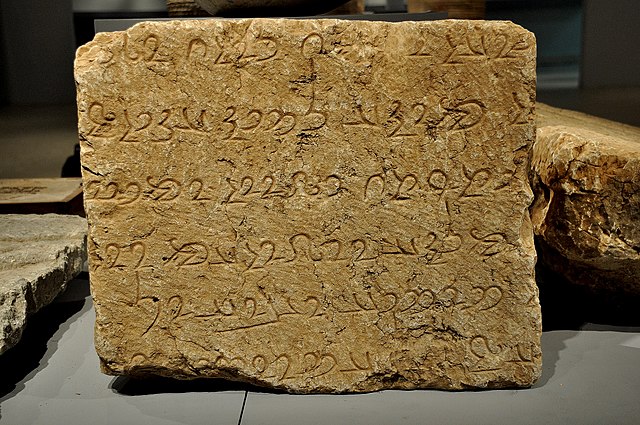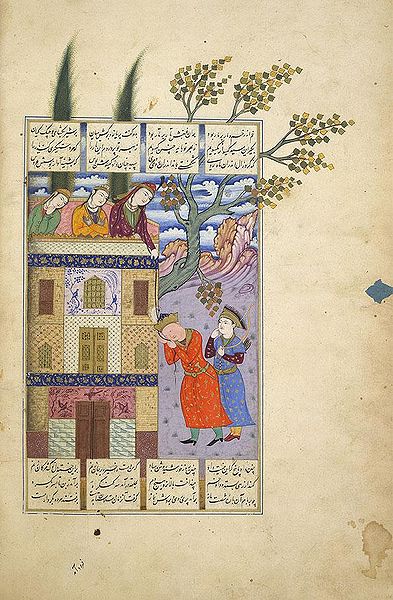The Seljuk dynasty, or Seljukids, Seljuqs, also known as Seljuk Turks, Seljuk Turkomans or the Saljuqids, was an Oghuz Turkic, Sunni Muslim dynasty that gradually became Persianate and contributed to Turco-Persian culture in West Asia and Central Asia. The Seljuks established the Seljuk Empire (1037–1194), the Sultanate of Kermân (1041–1186) and the Sultanate of Rum (1074–1308), which stretched from Iran to Anatolia and were the prime targets of the First Crusade.
Double-headed eagle, used as a symbol by several Seljuk rulers including Kayqubad I
Head of Seljuk male royal figure, 12–13th century, from Iran. Carved and drilled stone with Iranian craftsmanship. Kept at the New York Metropolitan Museum of Art.
Toghrol Tower, a 12th-century monument south of Tehran commemorating Toğrül
The Kharāghān twin towers, built in Iran in 1053 to house the remains of Seljuk princes
Persian, also known by its endonym Farsi or Parsi, is a Western Iranian language belonging to the Iranian branch of the Indo-Iranian subdivision of the Indo-European languages. Persian is a pluricentric language predominantly spoken and used officially within Iran, Afghanistan, and Tajikistan in three mutually intelligible standard varieties, respectively Iranian Persian, Dari Persian, and Tajiki Persian. It is also spoken natively in the Tajik variety by a significant population within Uzbekistan, as well as within other regions with a Persianate history in the cultural sphere of Greater Iran. It is written officially within Iran and Afghanistan in the Persian alphabet, a derivative of the Arabic script, and within Tajikistan in the Tajik alphabet, a derivative of the Cyrillic script.
An Old Persian inscription written in Old Persian cuneiform in Persepolis, Iran
Middle Persian text written in Inscriptional Pahlavi on the Paikuli inscription from between 293 and 297. Slemani Museum, Iraqi Kurdistan.
Ferdowsi's Shahnameh
Kalilah va Dimna, an influential work in Persian literature








